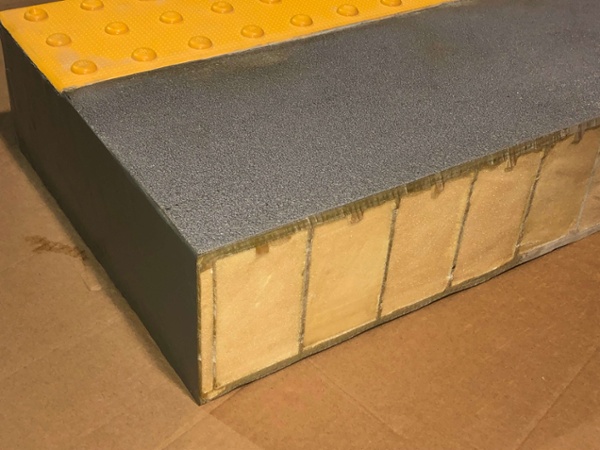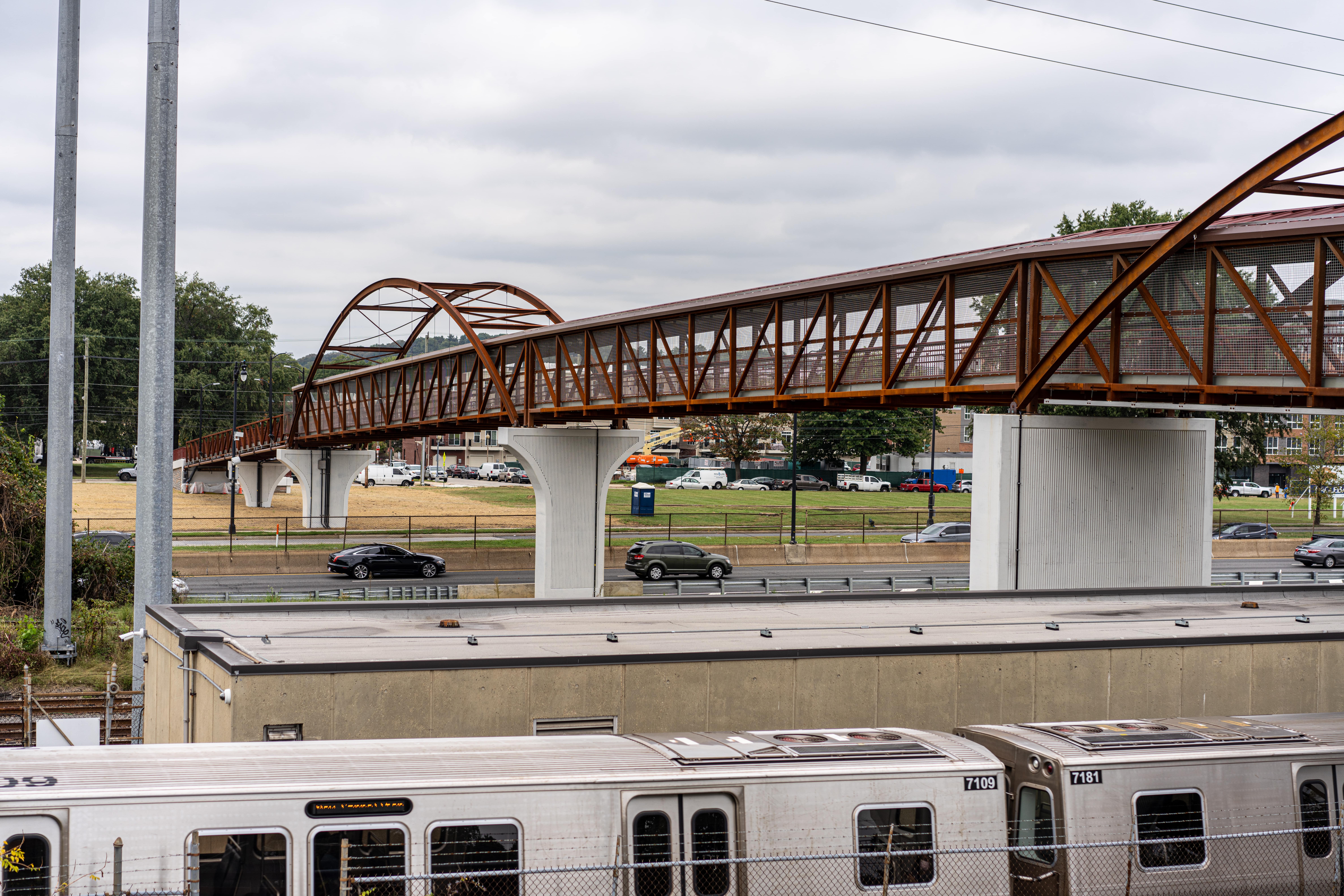
For the last few weeks, we’ve been talking about the installation of a complex fiber-reinforced polymer (FRP) composite rail platform project at Chelsea Rail Station in Massachusetts. This particular project had a lot of moving pieces. It also shed some light on an all too common problem. Estimators or engineers who are working with FRP for the first time can find the process of coordinating design, cost quotes, construction and installation schedules a bit overwhelming. We’ve put together a few guidelines to help you understand how FRP design and fabrication differs from that of traditional materials.
FRP or Carbon Fiber Reinforcement Material
An engineer familiarizing him or herself with composites must first evaluate whether the reinforcing fiber for a project should be fiberglass or carbon. The reinforcement material for prefabricated FRP rail platforms is fiberglass. There is a big difference between fiberglass and carbon fiber in terms of properties and cost. Carbon fiber is roughly 15 times the cost of FRP. In terms of weight, the difference between the two materials is minor compared to concrete and steel. On an aircraft where weight is critical, a customer is willing to pay the higher cost for carbon fiber. But for rail platforms, fiberglass composites are already five times lighter than conventional materials. Owners are not going to pay the higher price for carbon fiber when they are already getting a significant weight savings with FRP.
Design Requirements
So how does an engineer or estimator who is new to FRP begin the design process for an application like a rail platform? Start with design requirements. Deck design loads are based on AASHTO LRFD Bridge Design Specification (6th Edition) and the LRFD Guide Specification for the Design of Pedestrian Bridges (Dec. 2009).
FRP and Steel
Wondering how FRP is used compositely with steel? The answer is short and simple. The FRP supplier doesn’t design for composite action. The stiffness and mass of the two materials are too different; and connection methods for composite action require tight tolerances. An FRP deck transfers the live loads to the support structure (steel beams or concrete piers) and the superstructure transfers the load to the ground.
Strength Safety Factors
Since FRP materials are linear elastic to failure and do not yield like steel, the strength safety factors for FRP need to be higher than steel. Safety factors on bending and shear capacity should be a minimum of 4 per AASHTO’s Guide Specification for Design of FRP Pedestrian Bridges. These safety factors are applied after the statistical and environmental reductions. Since FRP has a lower stiffness than steel and reinforced concrete, deflection tends to drive the design of FRP panels and generates higher strength safety factors of more than 10.
Sandwich Construction
Sandwich construction is used for molded decking and panels because it provides the most efficient structural configuration for applications that require high stiffness and low weight. Multiple internal shear webs are molded with top and bottom face sheets to create a redundant pattern of I-beams. This anatomy is what allows panel depth and laminate thicknesses to be tailored to a project’s requirements, while maintaining light weight.
Directionalized Physical Properties
The structural calculations used in traditional beam equations to generate a design’s overall safety factors starts with FRP properties. It continues with strength calculations that are already familiar to engineers. It is important to remember that the physical properties of FRP structures can be directionalized based on a "rule of mixture” approach. In other words, what you add in one direction takes away from the other. Almost all structures should have some fibers in the 0°, 45°, 90° or -45° directions. This provides basic fiber strength in all directions of a panel. Our products are produced with more fibers in the directional load path as properties can be different in all three directions [x, y, z]. We all know that wood is stronger with the grain than against it, while Steel is isotropic. Its’ properties are the same in all directions. Since FRP is an engineered material, its properties can be customized.
Effective Widths for Loads
Like traditional materials, engineers can calculate section properties and moment capacities with material design properties and geometry. The most complicated component of FRP deck design is determining effective deck width with concentrated or vehicle loading applied. There is no standard or rule of thumb for this because of the variations in deck design. From our experience, the effective width can range from 40 percent to 90 percent of the support span. This variation is based on the internal structure of the FRP deck section. Designs that are unidirectional [in that they only have shear webs going in the primary load direction] tend to have effective widths closer to 40 percent, while structures that are bi-directional [in that they have shear webs in both directions] tend to have effective widths closer to 90 percent. There are two ways to determine the effective width of a design: FEA analysis or full-scale testing.
Joining FRP to the Superstructure
Generally, FRP decks and panels are joined to superstructure supports using mechanically fastened clips that capture the underside of the beam flange. This type of connection restrains the deck for vertical loads and wind uplift, while allowing for construction tolerances and thermal expansion variables. This connection does not provide composite action of the deck and beams as typically happens with concrete decking. The mass of the FRP is so low that it is not worth using a more complicated and costly connection detail to gain only a slight benefit of composite action.
Concentrated Loads and Crushing Loads
We design for mechanical connections analytically but we test for capacity. Sandwich construction means that compression (crushing) loads and shear loads from concentrated loads must be evaluated. Concentrated loads are typically vehicle wheel loads. Wider structures must handle either maintenance vehicles or emergency vehicles. Compression strength refers to the crushing load generated by a vehicle or truck’s wheels on the bridge. In the case of a pedestrian span, compression or crushing load could refer to a maintenance vehicle.
These are some of the “cliff notes” of FRP composites but there is still a lot of information to process. If you are new to FRP but have an application you are interested in using composite material for, contact us. We’ll walk you through the process. The long range benefits are worth a few growing pains upfront.
